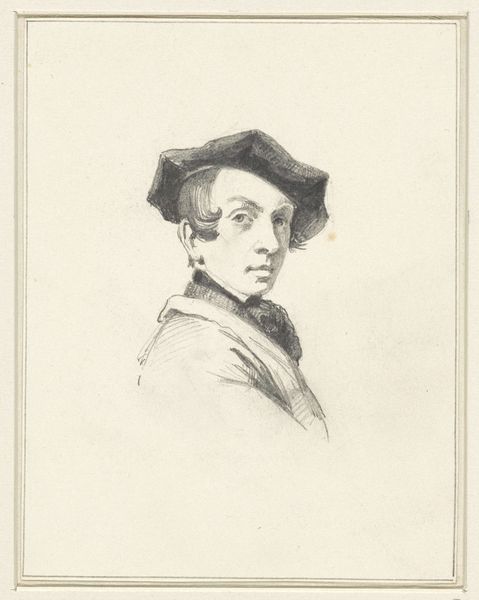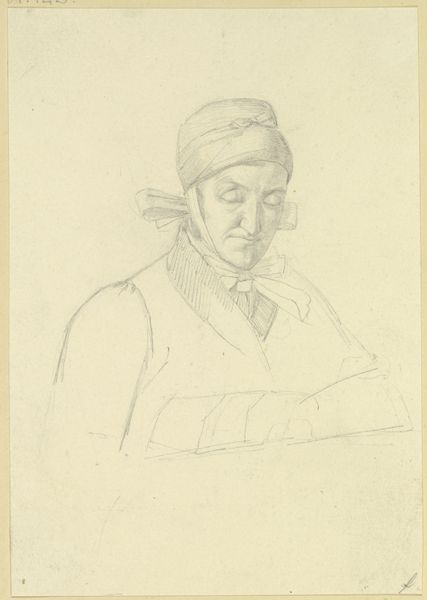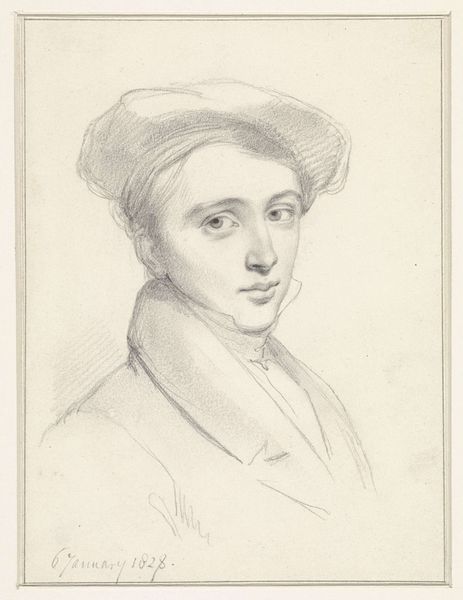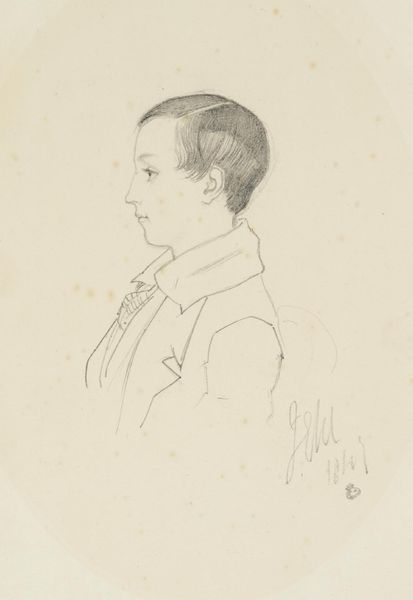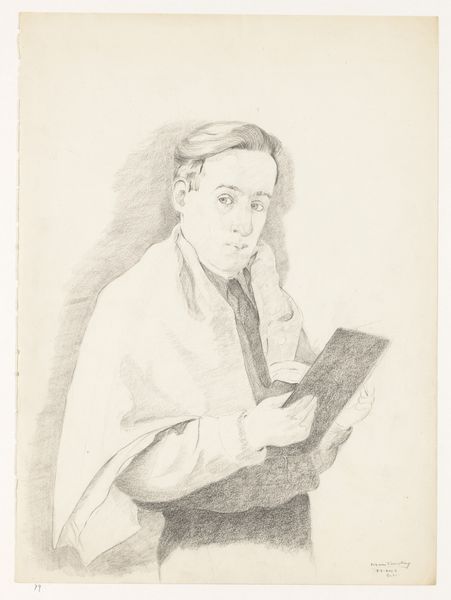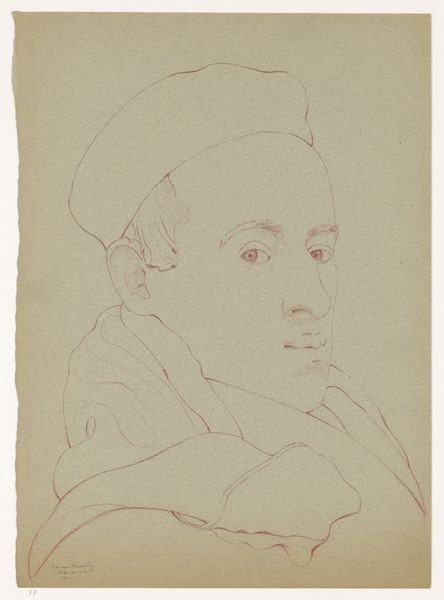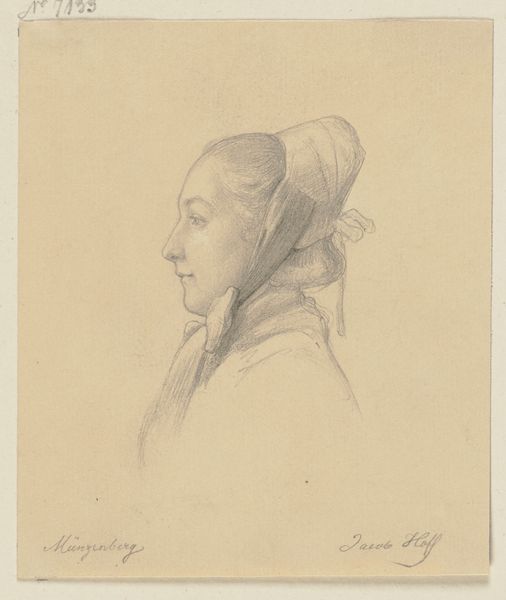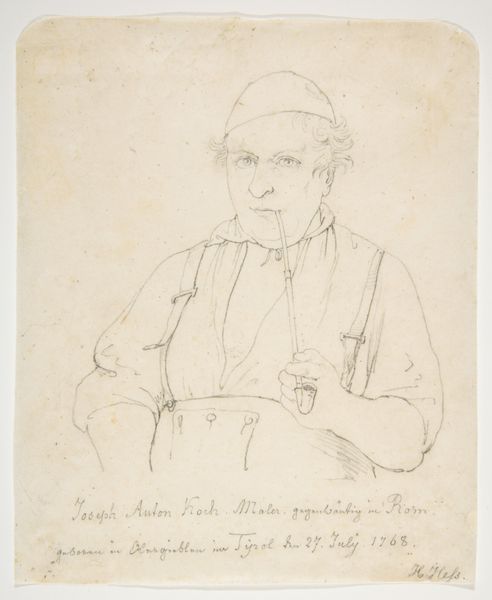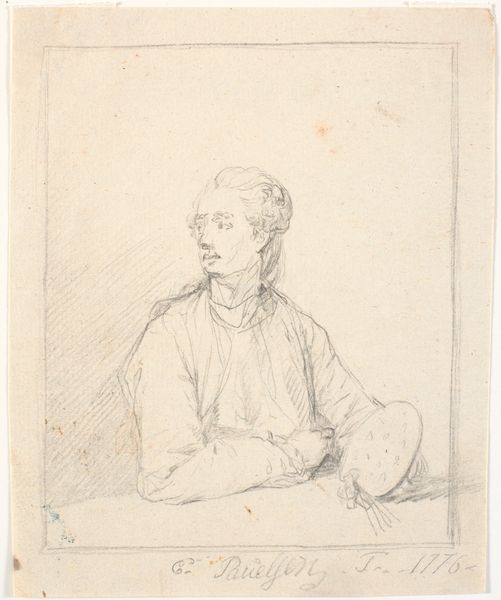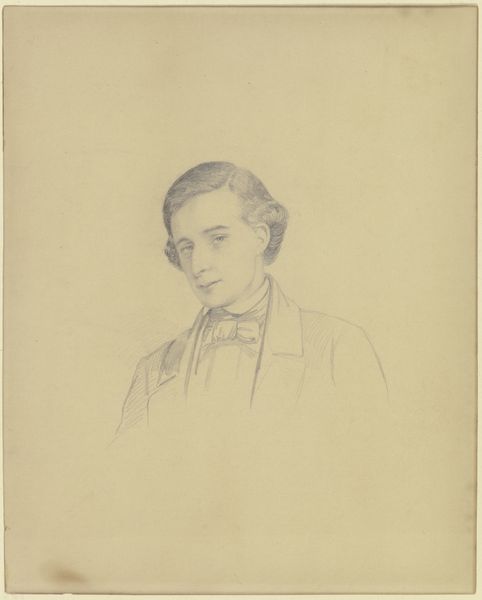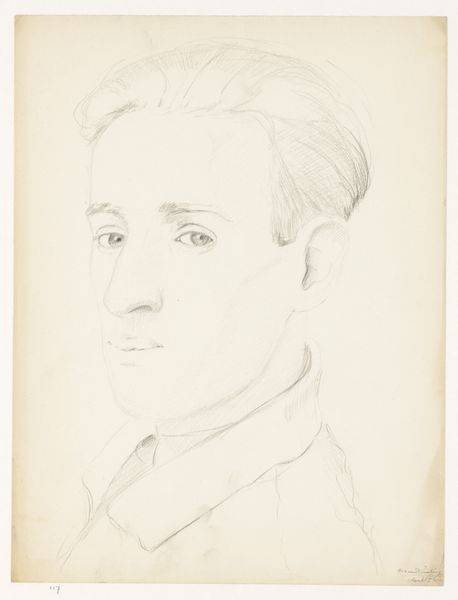
drawing, pencil
#
portrait
#
drawing
#
facial expression drawing
#
pencil sketch
#
caricature
#
portrait reference
#
pencil drawing
#
romanticism
#
pencil
#
animal drawing portrait
#
portrait drawing
#
facial study
#
portrait art
#
fine art portrait
Dimensions: sheet: 28 x 23.1 cm (11 x 9 1/8 in.)
Copyright: National Gallery of Art: CC0 1.0
Curator: This portrait drawing, titled "Adolf Zimmermann," dates back to 1828 and is attributed to Carl Oesterley. What strikes you first about this piece? Editor: The understated elegance, definitely. It's a pencil drawing, almost a sketch, yet it possesses this incredible level of detail and precision, especially in the subject’s expression and the rendering of his clothing. It feels intimate, almost as if we are intruding upon a private moment. Curator: That intimacy is heightened by the artistic conventions of the Romantic era. Consider the burgeoning interest in the individual and emotional expression during this period, Oesterley’s drawing certainly reflects that cultural focus. Editor: And it makes you think about the tools he would have had at his disposal. Just pencil and paper. Think of the preparation involved: the making of the pencil itself, the sourcing of the paper. It brings you back to the fundamentals of artmaking. Were drawings such as these often preparatory studies? Curator: Often, yes. In 19th century Europe portraiture was an important status symbol, particularly among the rising middle class. This may have been preparatory work for a larger, more formal painting. Also think of the art academies, where young artists perfected their technique. Drawings like this were very important for them. Editor: And the materials speak to a particular kind of accessibility, right? Unlike oil paints and canvas, pencil and paper are relatively inexpensive. I'm wondering about the sitter: who was Adolf Zimmermann? His clothing suggests someone of status. Curator: Research indicates that he was a landscape painter. Now forgotten by history but there were hundreds like him at the time. Editor: The details certainly invite speculation. The hat seems soft and well-worn, and it is skillfully captured through layering of graphite strokes. It reminds us of the humanity of artistic representation, its dependence on skilled labor. Curator: A lovely reminder that every image, no matter how simple, is rooted in the socio-economic context of its time, its own form of industry and aspiration. Editor: Yes, that consideration of process and raw material really shifted my perspective. Thanks.
Comments
No comments
Be the first to comment and join the conversation on the ultimate creative platform.
